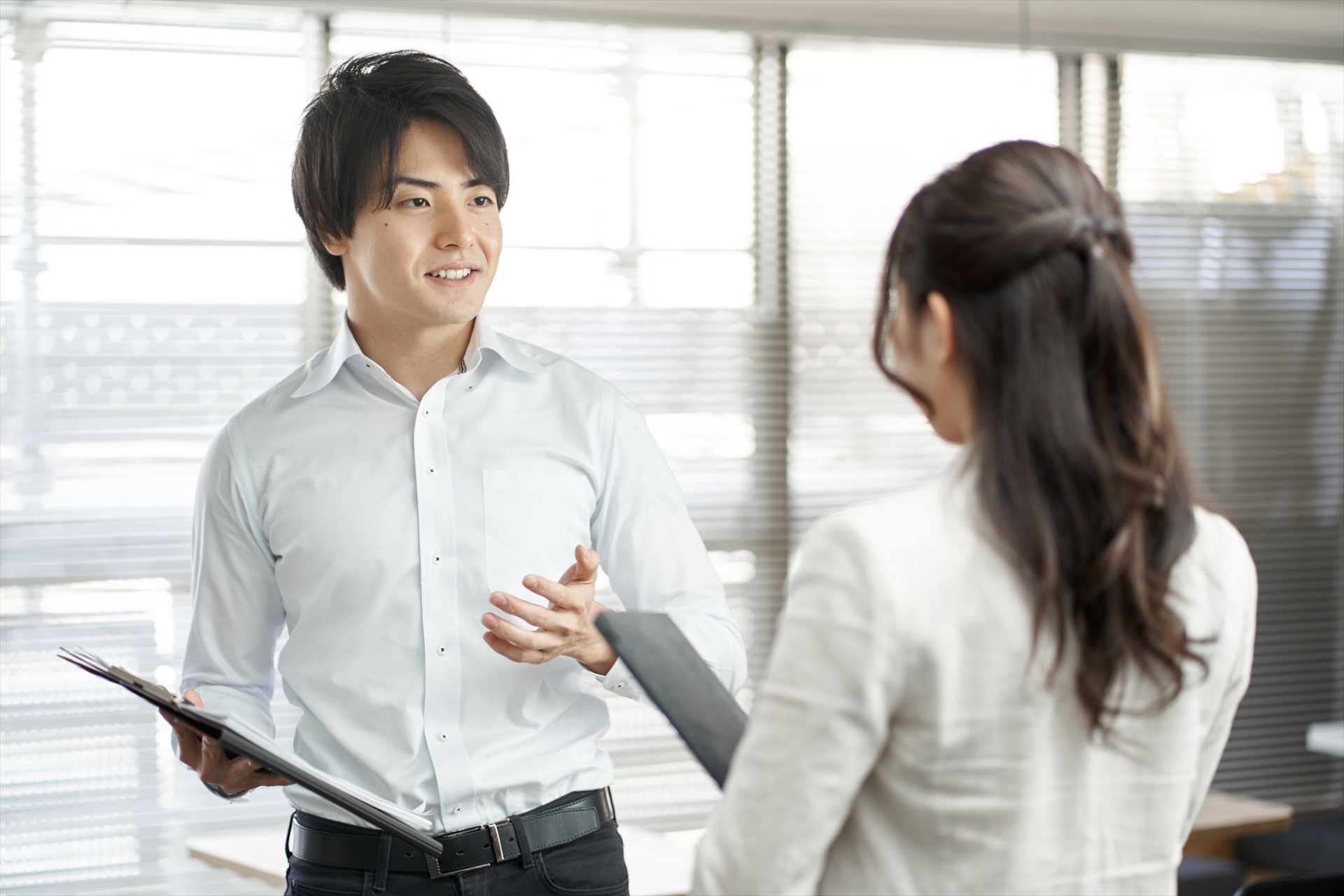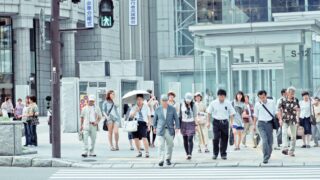
Mao Goto is a Japanese freelancer who was born in Hayama, Kanagawa prefecture, and raised in Tokyo. Since 2016 she lives in the Taito Ward, home to a lot of Japanese culture hotspots such as Asakusa, Akihabara, and Ueno. She has been interested in the field of English education in Japan and got her Master’s degree in March 2020. A lover of photography, travel, sweets, and cross-stitch. Contact her via Facebook.
This post may contain some affiliate links. When you click through and make a purchase we may receive some commission, at no extra cost to you.
If you are studying Japanese now and have acquired Japanese knowledge, you may want to use that in actual conversation and daily life. But how do you talk to Japanese people when you actually meet them? How should we speak to others in casual or business situations? This article will introduce some phrases and methods to use to help you start communicating in Japanese.
1. Japanese phrases to start a conversation
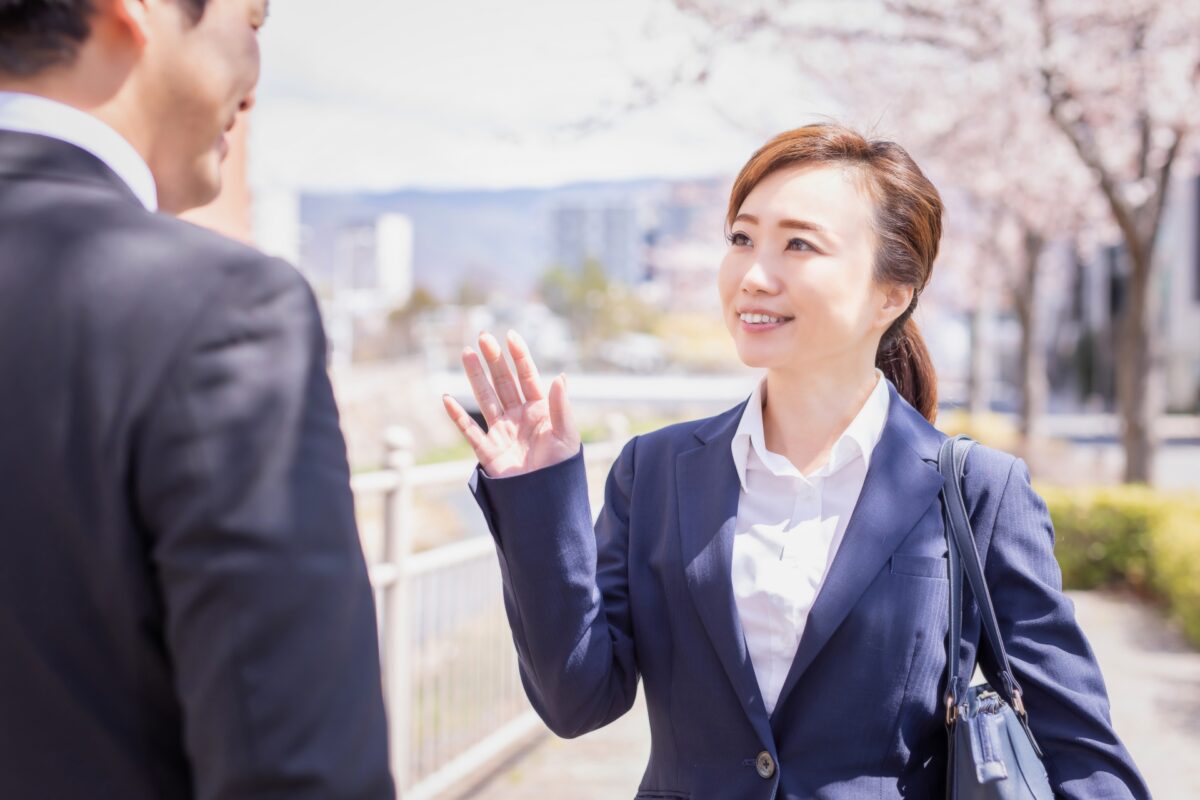
If you want to start a conversation with someone, beginning the conversation with a greeting. “こんにちは (Konnichiwa)” is the most basic Japanese phrase and is very useful as it can be used with strangers as well as close friends and family. Although this phrase is just a greeting, it can easily lead to a conversation because it can get the other person’s attention.
It also plays a very important role in making a good impression on the other person by greeting. If you speak directly to them about what you want to talk about, the other person may be confused, or at worst, may think you are rude, so it is highly recommended for you to say a greeting first.
(Example)
A: こんにちは。
Konnichiwa.
(Hello.)
B: こんにちは。 何かありましたか?
Konnichiwa. Nani ka arimashita ka?
(Hello. Is something wrong?)
A: はい、この建物の中のトイレを探していますが、どこにあるか知っていますか?
Hai, kono tatemono no nakano toire wo sagashite imasuga, doko ni aruka shitte imasuka ka?
(Yes, I’m looking for the restroom in this building, but do you know where it is?)
2. Use “すみません” (Sumimasen) if you want to sound polite

Although the phrase “Konnichiwa” mentioned above can be used by anyone, it is often used in casual situations. When speaking to a superior or in a business situation, say “すみません(Sumimasen)”.
“すみません”(Sumimasen, Excuse me) is often used in more formal situations, so on the contrary, it is not often used among friends and family members. When you are traveling in Japan and want to ask a local person a question in a polite manner, this phrase will surely get the person to respond in a pleasant way.
Of course, if they respond to your question or request, don’t forget to say “ありがとうございます” (Arigatou gozaimasu, Thank you) afterwards. Showing gratitude from your end shows respect towards the person you are talking to.
(Example)
A: すみません。
Sumimasen.
(Excuse me.)
B: はい、何でしょうか?
Hai, nan deshou ka?
(Yes, how can I help you?)
A: この商品を探しているのですが、どこにありますか?
Kono shouhin wo sagashite iru no desu ga, doko ni arimasu ka?
(I’m looking for this product, but where do you have it?)
B: あぁ、これは右の棚に置いてありますよ。
Aa, kore wa migi no tana ni oite arimasu yo.
(Ah, this is placed on the right shelf.)
A: 分かりました。ありがとうございます!
Wakarimashita. Arigatou gozaimasu!
(I see. Thank you very much!)
B: どういたしまして!
Douitashi mashite!
(You’re welcome!)
3. What to use with friends and acquaintances
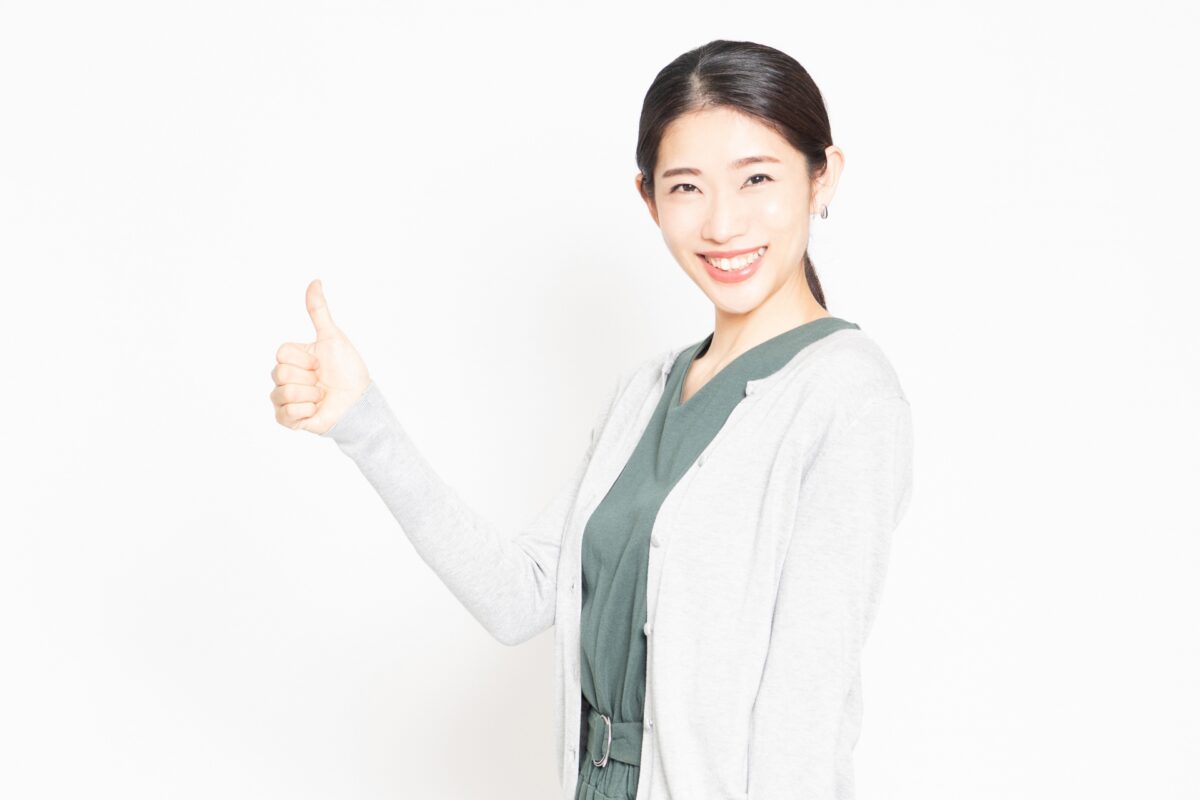
After a basic greeting such as “こんにちは(Konnichiwa, Hello)”, it is easy to continue the conversation by including a phrase that asks a question about the other person’s health or mood. The phrase that can be used in this situation is “How are you?”. The person’s response will vary from person to person, but most will reply with, “元気です。(Genki desu, I’m fine)”.
(Example)
A: 山田さん、こんにちは!お元気ですか?
Yamada-san, konnnichiwa! Ogenki desu ka?
(Hello, Mr. Yamada! How are you?)
B: 佐藤さん、こんにちは!元気ですよ。そちらはいかがですか?
Sato-san, konnichiwa! Genki desu yo. Sochira wa ikaga desu ka?
(Hello, Mr. Sato! I’m fine, and you?)
4. Talk about the weather
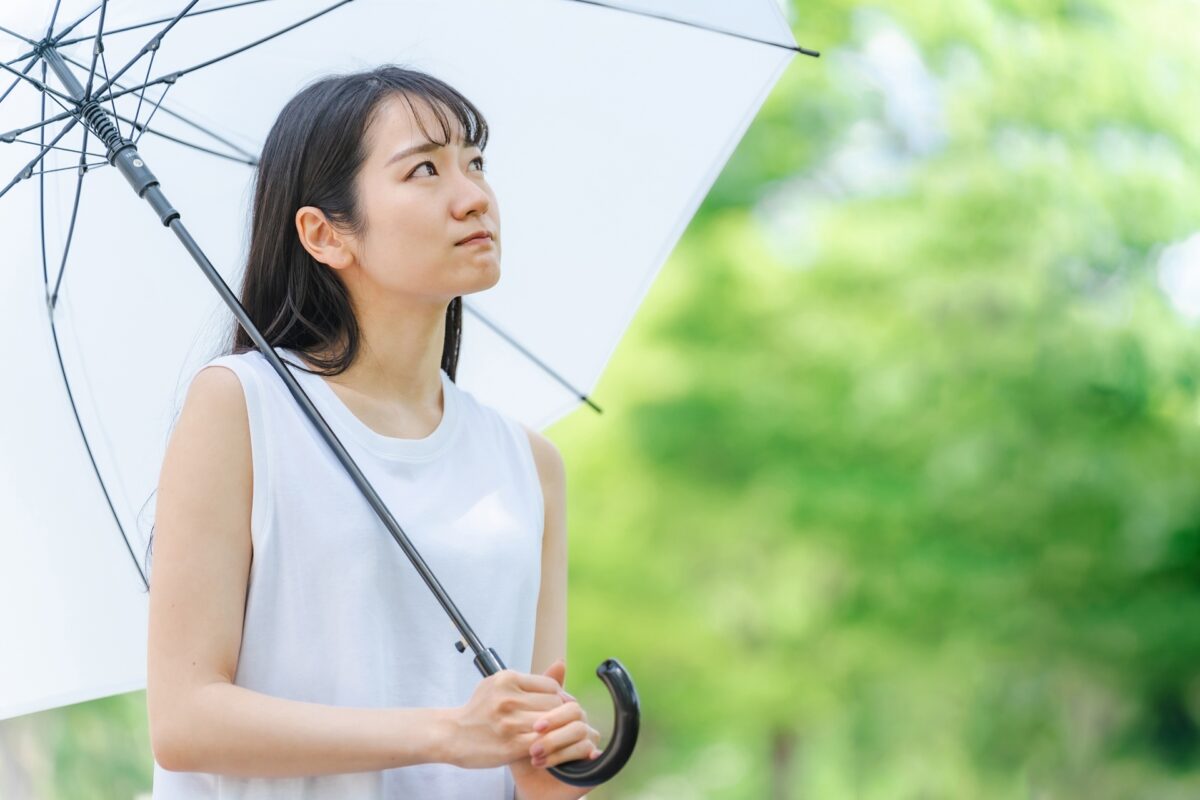
If you want to start a conversation smoothly without talking about anything personal, you can casually mention the weather. There are a variety of weather conditions and temperatures, such as sunny or rainy, and a brief mention of these can help move the conversation along.
(Example)
A: 山田さん、こんにちは。今日は良い天気ですね。
Yamada-san, konnichiwa. Kyou wa yoi tenki desu ne.
(Hello, Mr. Yamada. It’s a fine day today isn’t it.)
B: 佐藤さん、こんにちは。はい、良い天気ですね。
Sato-san, konnnichiwa. Hai, yoi tenki desu ne.
(Hello, Mr. Sato. Yeah, a fine day.)
Here is a list of several other weather conditions in Japanese, so let’s learn briefly here!
| How to say in Japanese | How to pronounce | Meaning in English |
| 晴れ | Hare | Sunny |
| 雨 | Ame | Rainy |
| 曇り | Kumori | Cloudy |
| 雪 | Yuki | Snowy |
| 暑い | Atsui | Hot |
| 寒い | Samui | Cold |
| 暖かい | Atatakai | Warm |
| 涼しい | Suzushii | Cool |
Of course, don’t forget to say “さよなら (Sayonara, good-bye)” after the conversation is over. It is considered rude to leave immediately without saying anything after the conversation ends. If something urgent comes up and you need to end the conversation, be sure to give the other person a brief reason and say goodbye before parting.
5. Learn from a Japanese Movie or TV show

Movies and TV shows are essentially visual textbooks filled with natural Japanese interactions used in everyday life. While Japanese books also contain a lot of Japanese conversations, you can learn not only the basic dialogue but also slang and how fast they communicate from the movies and shows.
Also, it is easier to imagine what the context of each conversation might potentially be like by paying attention to the situation and facial expressions of the actors, so the videos are often easier to understand than books. Anime is a great way to pick up daily conversation. Anime is full of useful phrases and conversations, making it a fun way to learn how to start a conversation in Japanese. Watch your favorite anime and listen carefully to how they are talking.
6. Body language

If a conversation is a bit difficult at first, you can always try using body language to get someones attention. Waving your hands to get the other person’s attention can easily lead to a conversation. Especially when meeting someone for the first time, eye contact alone may not be enough to get the attention of the person, so using gestures can be more effective.
Once you have the other person’s attention, say one of the aforementioned conversation starting phrases such as “すみません (Sumimasen)” to convey what you want to say. Of course, don’t forget to smile when you use body language, because an angry or sad face might make the other person uncomfortable.
We introduced several different phrases and methods to help you when starting a conversation in Japanese. When conversing with Japanese people, don’t forget to try to speak to them in a calm and cheerful way at first. This will help them warm up to you and most people will happily answer your questions in a polite manner. We hope this article will contribute to your Japanese studies and help you start a conversation in Japanese!
Japan Wonder Travel Tours
Japan Wonder Travel is a travel agency that offers guided tours throughout Japan.
From private walking tours to delicious Food and Drink tours, we can help you organize the best tours just for you! If you want to explore Japan and learn more about the history and backstories of each area you are visiting, our knowledgeable and friendly English speaking guides will happily take you to the best spots!
In addition, we can provide you with any assistance you may need for your upcoming trip to Japan, so please feel free to contact us if you have any questions or need some help!
▶Tokyo Tsukiji Fish Market Food and Drink Tour
Explore the most lively and popular fish market in Tokyo and try some of the local’s favorite street foods and sake with one of our friendly and knowledgeable English speaking guides!

▶Tokyo 1–Day Highlights Private Walking Tour (8 Hours)
There’s no better way to explore an area than taking a tour with a knowledgeable local guide. You will have the chance to learn about the history and interesting background stories of Tokyo, as well as discover some hidden gems which can be hard to do without a guide.

▶Mt. Fuji Day Trip Bus Tour from Tokyo
Experience the breathtaking views of Mt. Fuji by visiting the highlights of the area on our guided sightseeing bus tour! Departing from Shinjuku in central Tokyo, you can travel comfortably to all of the best spots in the area by bus.

▶Kyoto Private Full Day Walking Tour
On this full-day private tour of Kyoto, you will be able to see the highlights of Kyoto in just one day and at the same time develop a deeper understanding of both the culture of the area and Japan as a whole.
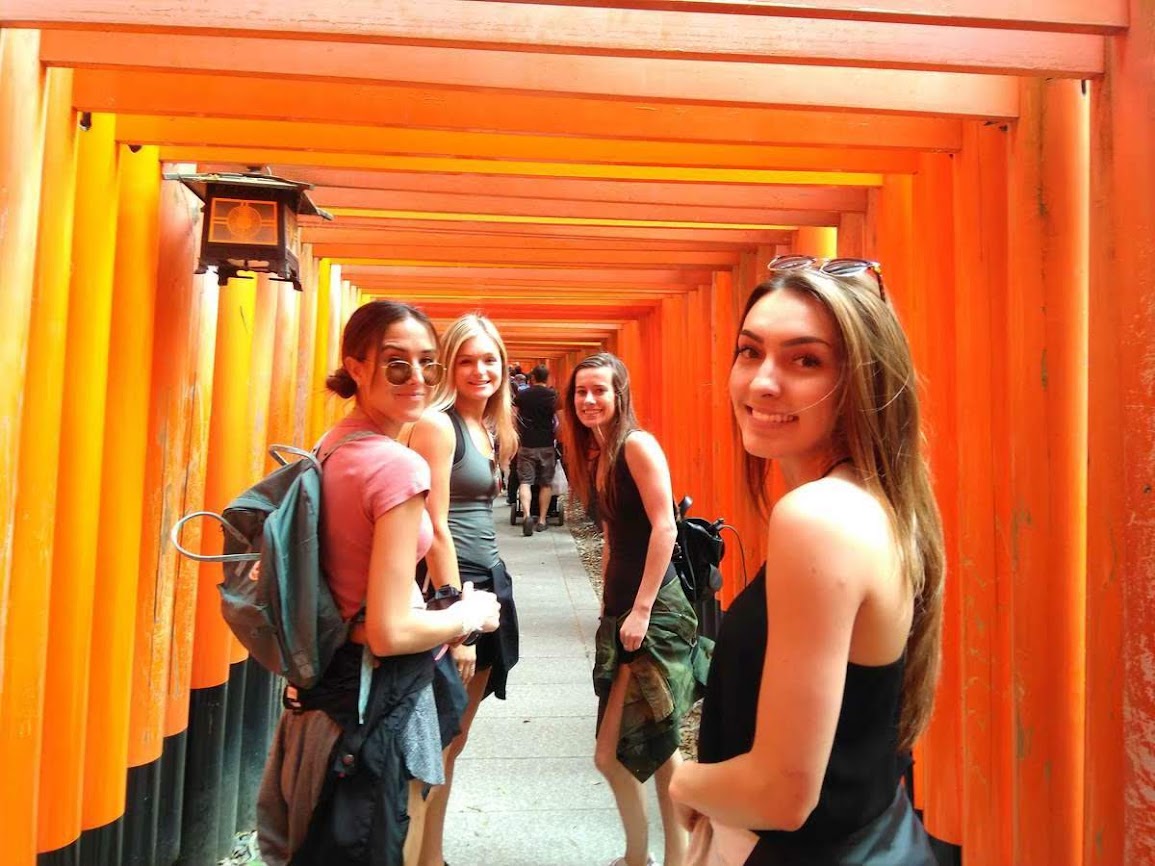
Follow us on Instagram, Facebook, Twitter, and TikTok for more travel inspiration. Or tag us to get featured!
Happy traveling!
